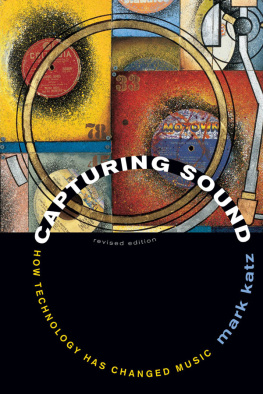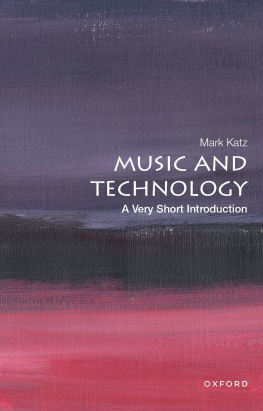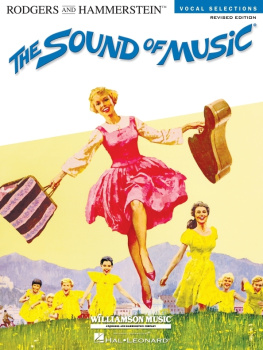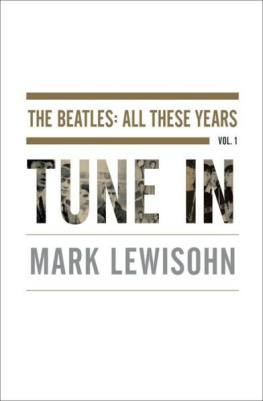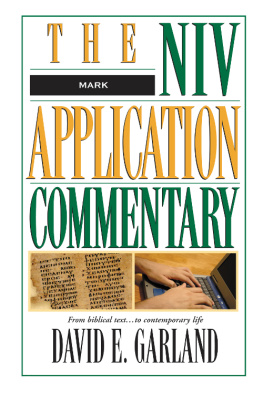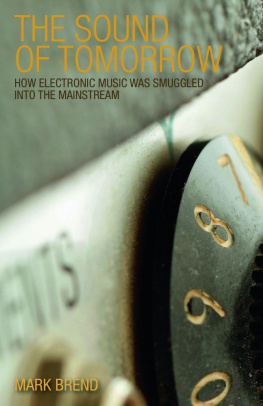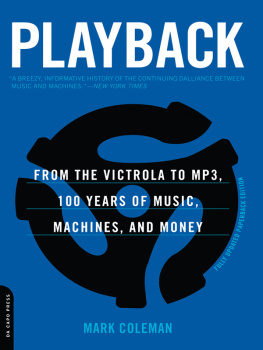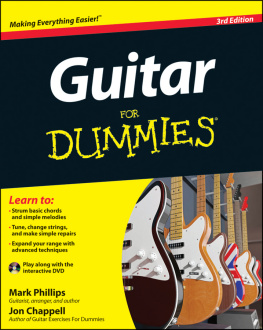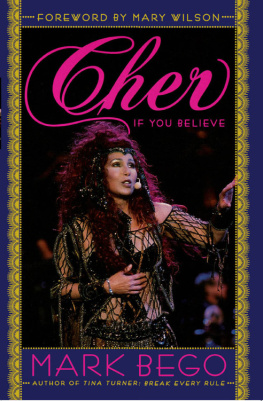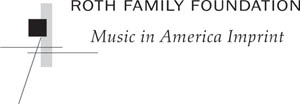
Michael P. Roth
and Sukey Garcetti
have endowed this
imprint to honor the
memory of their parents,
Julia and Harry Roth,
whose deep love of music
they wish to share
with others.
CAPTURING SOUND
University of California Press, one of the most distinguished university presses in the United States, enriches lives around the world by advancing scholarship in the humanities, social sciences, and natural sciences. Its activities are supported by the UC Press Foundation and by philanthropic contributions from individuals and institutions. For more information, visit www.ucpress.edu .
University of California Press
Berkeley and Los Angeles, California
University of California Press, Ltd.
London, England
2010 by The Regents of the University of California
Library of Congress Cataloging-in-Publication Data
Katz, Mark, 1970
Capturing sound : how technology has changed music / Mark KatzRev. ed.
p. cm.
Roth Family Foundation music in America imprint.
Includes bibliographical references and index.
ISBN 978-0-520-26105-1 (pbk. : alk. paper)
1. Sound recording industry. 2. Music and technology.
I. Title.
ML3790.K277 2010
Manufactured in the United States of America
19 18 17 16 15 14 13 12 11 10
10 9 8 7 6 5 4 3 2 1
This book is printed on Cascades Enviro 100, a 100% post consumer waste, recycled, de-inked fiber. FSC recycled certified and processed chlorine free. It is acid free, Ecologo certified, and manufactured by BioGas energy.
FOR BETH AND ANNA
CONTENTS
ILLUSTRATIONS
ACKNOWLEDGMENTS
The first edition of Capturing Sound and my daughter Anna both arrived in 2004. Anna still hasnt read the book, though as an infant she did try to eat it on occasion. She never succeeded in this, though whether it was the paper or my prose that she found indigestible Ill never know. I actually appreciate her indifference to my labors, and for that I thank her. Her demands on my time pushed me to be a more efficient, focused writer and helped wean me from my foolish dependence on sleep. The true reward, of course, was the time I got to spend with a delightful little girl who wont be little forever.
Neither Anna nor this book would have been possible without my amazing wife, Beth Jakub. She has been a tremendously positive influence on my thinking and writingand every other aspect of my lifefor more than twenty years. And she has been reading my work for nearly as long, ever since I asked for her thoughts on the draft of the senior thesis that became the dissertation that became the first edition of the book you are now reading. I owe her more than I can say.
I owe a great deal to the rest of my immediate family as wellmy parents, Evelyn and Warren Katz, and siblings, Ian Katz, Cheryl Anders, and Michael Katzfor their unfailing encouragement and support. I also thank my in-laws and my aunts, uncles, cousins, nieces, and nephews. I am related to a lot of very smart people, and I am gratified and delighted that they have taken an interest in my work.
I prepared this edition while teaching at the University of North Carolina at Chapel Hill, and I appreciate the support of my colleagues and students in the Department of Music. I want to thank professors John Ndas and Don Oehler for assigning the book to their students, as well as all the UNC students who read and provided feedback on the first edition. Three students helped me even more directly as research assistants: Will Boone, Tim Miller, and Chris Wells.
The opportunity to interact with smart, fascinating people who share my interest in music and technology has been one of the great pleasures of this project. The following list (which I hope isnt too incomplete) includes scholars, musicians, critics, and others who have provided valuable feedback, information, and insights as I prepared this edition: Pablo Aslan, Joseph Auner, Chase Barnard, Lauren Bernofsky, Philip Carli, Jeff Carroll, Richard Crawford, Patrick Feaster, GrandWizzard Theodore, Don Greig, Edmond Johnson, Jj Kidder, Alexander Magoun, Leta Miller, Sevarina Neff, 9th Wonder, Tim Page, Benjamin Piekut, Adrian Roberts, Alex Ross, Giles Slade, Jeremy Smith, Jonathan Sterne, Andrew Talle, Jeff Taylor, Tim Taylor, Matthew Thibeault, Thomas N. Todd, Anthony Tommasini, Anthony Volodkin, Patrick Warfield, and Ken Weiss.
This edition, of course, would not exist without the great work of the University of California Press. I have known Mary Francis for nearly a decade, and I am fortunate to have an editor who knows my topic and my work so well. She cares deeply about Capturing Sound, and the book is better for it. For this edition I also had the pleasure of working with managing editor Marilyn Schwartz, assistant editor Eric Schmidt, and copyeditor Madeleine Adams. They contributed to this book in very different ways, but all had the same concern: getting it right.
I also want to thank all those who read the first edition of Capturing Sound. I am grateful for the contact I have had over the past several years with a wide variety of readers, whether they complimented the book, identified phonograph effects I had never considered, or challenged my claims. And I offer a special thanks to the dozens of professors who assigned the book in their classes. It never occurred to me that Capturing Sound would appear on the syllabi of university courses around the world, and I find this unexpected development enormously gratifying.
Finally, to all the readers of this edition: I want to know what you think. Drop me a line sometime.
Carrboro, North Carolina
March 2010
INTRODUCTION
Several years ago, a friend asked me to explain the subject of this book, then in its early stages of development. Opting for a dramatic approach, I pulled a CD at random from a nearby shelf and brandished it in front of me. This, I declared, has changed the way we listen to, perform, and compose music. My friend squinted at the CD, gave me a quizzical look, and asked, That did? Yes! I answered with gusto. Seeming unconvinced, he clarified his question. Van Halen changed the way we listen to, perform, and compose music?
Maybe, but that was not my point. My claim was that the technology of sound recording, writ large, has profoundly transformed modern musical life. At its broadest, that is the thesis of Capturing Sound.
This thesis, however, counters more than a centurys worth of discourse about the nature and purpose of the technology, discourse that has reinforced the idea of recorded sound as the mirror of sonic reality. The famous Memorex advertisements in print and on television throughout the 1970s and 1980s offer a striking example. The ads demonstrate how the recorded voice of jazz great Ella Fitzgerald could shatter a wine glassas recorded on Like Memorex, Victor and its competitors were in the business of selling sound, and it behooved the industry to convince consumers that tiny grooves incised in black discs could somehow capture the essence of their flesh-and-blood musical idols.
The discourse of realism has not been limited to marketing campaigns. Musicians and scholars, too, have long testified to the objectivity of recordings. A recording is valuable chiefly as a mirror, averred the composer Igor Stravinsky, because it allowed him to walk away from subjective experience and look at it. Unlike in the advertising slogans, no ulterior motives seem to lurk behind these statements. Certainly, we cannot dismiss the documentary value of recordings, for they tell us a great deal about the musical practices of the past. But the discourse of realism ignores a crucial point: recorded sound is
Next page
